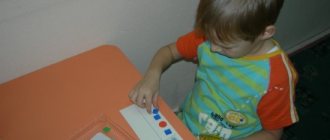In the modern world, writing skill plays a big role. From the first grades of school and throughout our lives, almost every one of us writes something from time to time. And for some it is even part of life. But what if this skill is impaired? Correcting written language disorders is a labor-intensive and difficult process. And this is exactly what we will talk about.
Causes of writing disorders
Partial impairment of written speech is called dysgraphia. In adults, it is rare and is a consequence of mechanical damage to the brain - trauma, stroke, tumor. In children, the basis of this pathology lies in the immaturity of the higher mental functions that are involved in the writing process. Violation of their formation can occur as a result of infectious or somatic diseases that deplete the nervous system.
Most often, the cause of dysgraphia is social factors: bilingualism, unclear speech of others, lack of speech contacts or inattention to the child’s speech. Therefore, speech therapy and dysgraphia in matters of correction should be closely related
Features of correction of violations of written and oral speech of primary schoolchildren
Bibliographic description:
Yakubovskaya, Yu. V. Features of correction of violations of written and oral speech of primary schoolchildren / Yu. V. Yakubovskaya, O. B. Elysheva, E. V. Metelkina. — Text: immediate // Psychology: traditions and innovations: materials of the II International. scientific conf. (Samara, March 2016). - Samara: ASGARD Publishing House LLC, 2016. - P. 80-83. — URL: https://moluch.ru/conf/psy/archive/197/9960/ (access date: 01/03/2022).
Primary school age is a special period in a child’s life, associated with major changes in the mental, psychophysiological, intellectual and social life of the child. The beginning of this age period is associated with a special situation of personality development, a shift in the child’s leading activity from play to learning, a new type of knowledge acquisition, a change in the cognitive sphere and relationships with the social environment.
During this period, schooling, which is a specially organized child’s acquisition of knowledge, a system of scientific concepts, methods of action, moral rules and relationships between people, plays a leading role in the development of the child. In the process of schooling, all mental operations develop, such as synthesis - from practically effective to sensual, from elementary to broad and complex, analysis - from practically effective, sensual to mental, from elementary to in-depth, generalization, comparison and classification. At primary school age, changes occur in children’s awareness of their own mental operations, which helps them exercise self-control in the process of cognition, flexibility and critical thinking appear [2, pp. 139-140].
The learning process places new demands on the perception of information, memory and attention. During this period, there is a transition from lower to higher mental functions, which are intellectualized, regulated, realized and acquire a voluntary character [1, p. 200].
The formation of an “internal plan”, self-control, self-organization and reflection (self-assessment of one’s actions based on correlation with the plan) is closely related to the formation of an voluntary level of cognitive mental processes and voluntary behavior in younger schoolchildren.
All these transformations affect the personal, emotional and motivational sphere of the primary school student. In the process of schooling, creative imagination develops, the child’s individual abilities are revealed, adequate self-esteem is formed, social norms are learned, and communication skills with peers and adults are acquired. Under the influence of the new leading activity, a more stable structure of motives is formed in younger schoolchildren, in which the motives of educational activity become leading. Successes and failures can lead to both feelings of competence, importance and success, and feelings of uncertainty, inferiority and disadvantage.
During this period, the child masters written speech - a fundamentally new type of speech, which develops in the child the ability to deliberately express his thoughts, complicates the structure of communication, as it opens up the opportunity to address an absent interlocutor, promotes the voluntary and conscious implementation of oral speech [2, p. 141] . Thus, primary school age is a period of changes and transformations that play a very important and significant role in subsequent development.
A disorder of written speech, dysgraphia, which often occurs in primary school age, is a selective disorder of the process of mastering writing while maintaining the motor function of the upper limb, associated with damage or incomplete formation of mental functions responsible for the control and implementation of written speech. The cause of such disorders is considered to be lesions in the left (dominant) parietal lobe, affecting the complex speech system [7, p. 170-171].
Dysgraphia in children of primary school age is manifested by persistent, repeated errors not related to knowledge of the rules of the Russian language, such as: omissions, rearrangements, substitutions, underwriting of letters and syllables, inability to indicate the softness of consonants, incorrect use of prepositions, endings of nouns, verbs, adjectives and other specific errors. Dysgraphia is often accompanied by reading impairment or dyslexia, manifested by inaccurate word recognition, slow reading speed, and lack of understanding of what is read. In children with such disorders, the ability to analyze linguistic phenomena suffers. They do not always know how to notice and highlight the sound, morphological and syntactic elements of speech and consciously use them in their practice. In addition, children with dysgraphia and dyslexia have insufficient development of auditory-verbal memory, attention and self-control skills. Impairments in written speech and reading in children of primary school age are a common cause of persistent academic failure, school maladaptation and deviations in the formation of the child’s personality as a whole [8, p. . 4]. Thus, it becomes obvious the need for joint correctional work of a speech therapist, educational psychologist and neurologist for the timely identification of such disorders, appropriate assistance aimed at eliminating in children existing gaps in the development of oral and written speech, the formation of correct pronunciation, phonemic morphological , syntactic generalizations, successful mastery of program material, restoration of adequate self-esteem and school adaptation [6, p.16].
Diagnosis of children with dysgraphia and dyslexia has a number of difficulties associated with the close interweaving of symptoms, including speech, cognitive, emotional-volitional and communication disorders. Speech therapy diagnostics includes two stages: examination of the state of written speech (visual, auditory dictation and reading) and examination level of the child’s oral speech (state of sound pronunciation, phonemic hearing, syllabic structure of the word, sound analysis and synthesis, vocabulary, grammatical structure of speech, coherent speech). Based on the diagnostic results, the type of dysgraphia, the degree of impairment and the reasons underlying the writing impairment are determined, since the duration of correctional work, which is closely related to the learning process, depends on this [3, p.7]. After this, correctional tasks are outlined aimed at eliminating speech defects and developing the child’s oral and written speech to the level necessary for successful learning at school. Speech therapy classes with children with speech disorders necessarily include techniques aimed at developing phonemic hearing, the formation of sound analysis and synthesis, the syllabic structure of words, enrichment and clarification of vocabulary, correction of the grammatical structure of the language, training of the articulatory apparatus, consolidation of correct pronunciation, education of correct , competent coherent speech.
Psychological diagnosis of a child includes identifying the personal and emotional characteristics of children (fears, anxiety, aggression), the degree of their frustration with the learning process at school, motivation to overcome difficulties, and characteristics of the volitional and communicative sphere. Then, based on the child’s potential capabilities, the psychologist outlines tasks aimed at increasing self-confidence, forming adequate self-esteem, normalizing relationships with peers and adults, mastering new experiences, verbalizing sensory experience and spatial representations, developing the motor sphere, searching for creative abilities, and also motivating children to actively participate in correctional work.
Psychological sessions with children who have problems with oral or written speech include a wide range of different art therapy methods, such as isotherapy, fairy tale therapy, play therapy, Sandplay therapy and music therapy.
The process of drawing with paints, pencils, and felt-tip pens is closely related to the free expression of one’s own thoughts, feelings and emotions, which often cannot be expressed verbally. Drawing develops and connects motor coordination, vision, speech and thinking, activates the work of the right (compensatory) hemisphere, promotes the development of symbolic thinking, fantasy and imagination. To reveal the therapeutic potential of art therapy, it is highly desirable that drawing in the classroom be a spontaneous process.
In turn, play for children of primary school age, as a voluntary, internally motivated activity, is an active way of self-expression, a manifestation of creative activity, an attempt to comprehend external experience and, at the same time, a way of “acting out” a complex, conflictual, possibly severely traumatic life situation. The game helps to get in touch with the child’s unconscious and is a guide to his inner world. In the game, the child symbolically represents his fantasies, drives and experiences, using archaic and phylogenetically acquired language and method of self-expression [4, p.6]. Actions with toys for him are a means of expressing what adults express in words. The use of gaming technology makes it possible to verify that children with impairments in written and oral speech demonstrate no less associativeness in various variations of their games than children without such impairments.
No less significant results can be achieved by using music for correction purposes. A certain vibration caused by music entails a mental and autonomic reaction. Sound affects auditory and vibrotactile perception, manifested by peculiar bodily reactions, such as changes in pulse, dilation of blood vessels, changes in heartbeat and breathing, and the release of endogenous endorphins. Listening to music creates a balance between the left and right hemispheres. By individually selecting music and instruments, the psychologist helps to activate, calm, relax, tune in or interest the child, helps to respond to his feelings, and develop the child’s creative and communicative abilities [5, pp. 75-84].
The use of Sandplay therapy in working with children with writing and reading disorders has a high corrective potential, associated, first of all, with an increase in figurative neural activity of the brain. The figures and symbols chosen by the child indirectly contribute to his mental development. Used individually or in groups, symbols in sand compositions can create a completely new neural experience that is ahead of consciousness. In turn, the functioning of the hand is closely related to speech skills, and the visual aspect of sand therapy also affects the process of change and learning. The sandbox design itself has a number of advantages - the sand composition is built in a horizontal field, which makes it easier to focus on the content of the images. Manipulating hands and figures in the sand, moving, positioning them relative to each other gives meaning to the relationship between them and is similar to the creation of stories. By asking the child if he wants to tell a story about his sand composition, the psychologist gives him the opportunity, by activating the speech centers of the brain, to deepen his creative experience. It is important to remember that the development of functions such as speech and writing requires a broader and more open, image-based perception of the right hemisphere. The combined use of sand therapy and narrative composition integrates the creative process and the structuring functions of language, thus facilitating deep structural neural changes [9, p. 91-101].
To solve the psychological problems of dysgraphia and dyslexia, group work methods are also very effective, in particular, various games and exercises for the development of imagination, concentration, manifestation of creativity, self-confidence, assimilation of norms of social behavior, development of communication and cognitive skills.
There is no doubt that the success of correctional work of specialists is largely related to the participation of parents in it. Even at the diagnostic stage, parents should be psychologically prepared for cooperation with a psychologist, speech therapist and doctor, shown the importance of joint work of the family and the specialists involved in working with the child, explained, clarified, supported parental functions and set up for possibly long-term correctional work.
Only with such a comprehensive differentiated approach to the correction of dysgraphia and dyslexia, aimed not only at correcting defects in written and oral speech in children, but also at the formation and development of mental processes and personality as a whole, is it possible to achieve the best result.
Literature:
- Vygodsky L.S. Thinking and speech. M.: Labyrinth Publishing House, fifth edition, rev. 1999, 352 p.
- Gamezo M.V., Petrova E.A., Orlova L.M. Developmental and educational psychology: A textbook for students of all specialties of pedagogical universities. M.: Publishing house Pedagogical Society of Russia, 2003, 512 p.
- Efimenkova L.N. Correction of oral and written speech of primary school students M.: Vlados, 2003, 336 p.
- Klein M. Child psychoanalysis. M.: Institute of General Humanitarian Research, 2010, 160 p.
- Kiseleva M.V., Art therapy in working with children: a guide for child psychologists, teachers, doctors and specialists working with children, St. Petersburg, Rech, 2007, 160 p.
- Kukushin V.S. Speech therapy at school Publisher: Phoenix, 2010, 368 p.
- Skoromets, A.A., Skoromets A.P., Skoromets T.A., Topical diagnosis of diseases of the nervous system. Guide for doctors, 8th edition, revised and expanded, St. Petersburg: Politekhnika, 2012, 623 p.
- Sadovnikova I.N. Disorders of written speech and their overcoming in primary schoolchildren. M.: Vlados, 1997, 256 p.
- Turner B. Impact of sand therapy on neurology, Jungian sand therapy. Independent supplement to the journal Jungian Analysis, 2013, p. 91-101.
Key terms
(automatically generated)
: written language, primary school age, child, disorder, adequate self-esteem, learning process, development, oral language, school learning, sound analysis.
Types of dysgraphia. Manifestations of writing disorders in different types of dysgraphia
Dysgraphia is divided into four main types depending on the mechanisms of formation of incorrect spelling of letters, words or phrases. Timely identification of the causes of dysgraphia is important for its correction, so let’s look at them in more detail.
Acoustic dysgraphia
Acoustic dysgraphia is associated with incorrect differentiation of sounds by a child. At the same time, the child can pronounce sounds correctly, but in writing he replaces them with similar ones. Most often, there is a mixture of letters denoting whistling and hissing, dull and voiced sounds, affricates (ch-sch, ts-t, ch-t, ts-t, s-sch, ts-s, b-p, d-t, etc).
Optical dysgraphia
Optical dysgraphia is associated exclusively with weaknesses in visuospatial processes - differentiation and memorization. The child confuses letters that are similar in spelling and therefore makes mistakes in writing. Examples - capital letters p-t, v-d, i-sh.
Optical dysgraphia is divided into two subtypes - literal (incorrect spelling of isolated letters) and verbal (separate letters are written correctly, but mistakes are made in words).
Agrammatic dysgraphia
The cause of agrammatic dysgraphia is the child’s unformed lexical and grammatical structure. He cannot use cases and their endings correctly and agree on different parts of speech in phrases.
Articular-acoustic dysgraphia
Dysgraphia of the articular-acoustic type involves speech therapy errors in writing. The child pronounces some words incorrectly and therefore writes them incorrectly. It is based on an even more complex mechanism: during internal pronunciation of a word there is no reliance on normal articulation. Hence the errors in writing.
Methods and techniques for correcting writing impairments in students with disabilities
Written speech is a complex mental activity. In order to use written language, you need to acquire a number of skills and abilities. The initial stage of mastering written language is mastering writing and reading skills. Writing involves carrying out an accurate, strictly sequential phonemic analysis of a word and correlating the highlighted sounds with the corresponding phonemes, i.e., performing a phonemic generalization. Then the phonemes must be designated with strictly defined letters. Writing requires clear differentiation of similar phonemes from each other, strong memorization of letter graphics and reproduction of them in the required sequence.
Speech disorders in mentally retarded children manifest themselves against the background of gross impairment of cognitive activity and abnormal mental development of the child as a whole.
To eliminate violations of written speech, it is necessary to be guided by the principles of correctional work (the principle of complexity, the pathogenetic principle, the principle of taking into account the symptoms and severity of reading and writing disorders, the principle of relying on a intact link of mental function, on intact analyzers, on their interaction, the principle of the gradual formation of mental actions, the principle of gradual complication of tasks and speech material, taking into account the “zone of proximal development”, the principle of systematicity, the ontogenetic principle).
There are various classifications of teaching methods. Various methods are used in correctional work: practical, visual and verbal. The choice and use of one or another method is determined by the nature of the speech disorder, the content, goals and objectives of the correctional intervention, the stage of work, the age, individual psychological characteristics of the child, etc.
During writing and speech development lessons in primary school, a variety of methods for correcting writing impairments are used: practical, visual, verbal. When working with mentally retarded students, verbal methods can be combined with practical, visual ones.
Practical methods of correctional work include exercises, games and modeling.
Exercise
- this is the child’s repeated repetition of practical and mental specified actions. For correctional work, it is advisable to use the following exercises: copying, dictation, construction, imitative-performing exercises, writing from memory.
Cheating
- one of the most common types of written exercises; used: when teaching writing and calligraphy techniques; when teaching spelling and grammar, usually with additional tasks. There are two types of cheating: simple and complicated. In the first case, the student has only one task - to reproduce the finished text without errors. In the second, cheating either precedes the completion of one or another language task (grammatical or spelling), which is carried out on the material of the copied text, or includes additional tasks (inserting letters or words, changing the forms of words, etc.).
Dictation
- This is an exercise consisting of students recording material perceived by ear. All types of dictations can be divided on two grounds: 1) the structure of the material proposed for dictation; 2) the main purpose of carrying it out.
Depending on what material is offered for dictation, there are letter dictations, merger dictations, vocabulary dictations, dictations on phrases, individual sentences and connected text.
According to the main purpose of conducting, all dictations are divided into training and control. Visual dictation consists of the teacher writing one or two sentences on the board and, after the children have carefully read and analyzed with him, closes the text. Next, students write independently and then check what they have written against the text. Picture dictation consists of the following: subject pictures are shown, children write down their names, analyzing the words before recording or after completing the work. With self-dictation, students add one word - a rhyme - and write it down, as if dictating to themselves.
Letter from memory
requires delayed reproduction of prose or poetic material.
Performing any exercises contributes to the formation of practical skills only if the following conditions are met:
- the child's awareness of the goal. This depends on the clarity of the task, the use of the correct demonstration of methods of execution, the disaggregation of the demonstration of complex exercises, taking into account the age and mental characteristics of the child;
- systematicity, which is implemented through repeated repetition (in lessons of writing and speech development using a variety of speech and didactic material and various situations of verbal communication);
- gradual complication of conditions, taking into account the stage of correction of the age and individual psychological characteristics of the child;
- conscious implementation of practical and verbal actions;
- independent performance at the final stage of correction (although at the initial stages of correction, exercises can be performed with the help of a teacher, with mechanical assistance, etc.);
- differentiated analysis and assessment of implementation.
Imitative-performing exercises are performed by children in accordance with the model. In correctional work, a large place is occupied by practical exercises (breathing, vocal, articulatory, developing general, manual motor skills). At the initial stages of assimilation, demonstration of actions is used, and during repetitions, as the method of action is mastered, the visual demonstration is increasingly “collapsed” and replaced by verbal designation.
Various types of design can be used in correctional work. For example, when eliminating optical errors, children are taught to construct letters from elements, from one letter to another.
Game method
involves the use of various components of gaming activity in combination with other techniques: demonstration, explanation, instructions, questions. One of the main components of the method is an imaginary situation in expanded form (plot, role, game actions).
In the game method, the leading role belongs to the teacher, who selects the game in accordance with the intended goals and objectives of correction, distributes roles, organizes and activates the activities of children.
You can use various games with students: singing, didactic, active, creative, dramatization. Their use is determined by the tasks and stages of correctional work, the nature and structure of the defect, the age and individual mental characteristics of children.
Modeling
is the process of creating models and their use in order to form ideas about the structure of objects, the relationships and connections between the elements of these objects.
The effectiveness of their use depends on the following conditions:
- the model must reflect the basic properties of the object and be similar in structure to it;
- be accessible to a child of a given age;
- should facilitate the process of mastering skills, abilities and knowledge.
Sign-symbolic modeling has become widely used. For example, when forming sound analysis and synthesis, graphic diagrams of the structure of a sentence, the syllabic and sound composition of a word are used.
The use of a model presupposes a certain level of formation of mental operations (analysis, synthesis, comparison, abstraction, generalization).
When working with mentally retarded schoolchildren, the use of visual aids facilitates the assimilation of materials and contributes to the formation of sensory prerequisites for the development of speech skills. Reliance on sensory images makes the acquisition of speech skills more specific, accessible, and conscious, and increases the effectiveness of speech therapy work.
Visual methods include observations, examination of drawings, paintings, models, as well as showing a sample task, a method of action, which in some cases act as independent methods.
Visual aids should:
- be clearly visible to everyone;
- selected taking into account the age and individual psychological characteristics of the child;
- meet the objectives of correctional work at this stage of correction;
- be accompanied by precise and specific speech;
- a verbal description of an object should contribute to the development of analytical-synthetic activity, observation, and speech development.
The use of manuals can pursue various goals: correction of sensory disturbances (ideas about color, shape, size, etc.), development of phonemic perception (in a picture, find objects whose names contain the sound being practiced), development of sound analysis and synthesis (find objects in a story picture, the name of which has 5 sounds), consolidation of the correct pronunciation of sounds, development of vocabulary, grammatical structure, coherent speech (composing a story based on a story picture, a series of story pictures).
Features of the use of verbal methods in correctional work are determined by the age characteristics of the children, the structure and nature of the speech defect, goals, objectives, and the stage of correctional intervention.
The main verbal methods are story, conversation, reading. The most effective methods for corrective work with mentally retarded primary schoolchildren are the following:
Story
- This is a form of teaching in which the presentation is descriptive. It is used to create in children an idea of a particular phenomenon, to evoke positive emotions, to create a model of correct expressive speech, to prepare children for subsequent independent work, to enrich their vocabulary, and to consolidate grammatical skills of speech.
Depending on the didactic objectives, preliminary, final, generalizing conversations
.
During the preliminary conversation, the teacher reveals the children’s knowledge and creates a mindset for mastering a new topic. For example, when differentiating the sounds ts
-
s
in a preliminary conversation, the sound
s
, then
ts, and
their articulation is clarified based on the children’s experience. Then the sounds are compared and the existing knowledge is generalized. The final conversation is conducted to consolidate and differentiate speech skills.
The use of conversation in correctional work must meet the following conditions:
- rely on a sufficient amount of ideas, the level of speech skills, and be in the child’s zone of proximal development;
- correspond to the logic of the child’s mental activity, take into account the peculiarities of his thinking;
- activate children’s mental activity using a variety of techniques, including leading questions;
- questions should be clear, precise, requiring an unambiguous answer;
- the nature of the conversation must correspond to the goals and objectives of correctional work.
Corrective action is carried out in the following forms of training: frontal, subgroup, individual.
It is important to ensure an optimal balance between frontal and individual methods of overcoming writing impairments in the process of remedial education. This requirement forms the basis of a differentiated approach to students, taking into account the patterns of abnormal development of their speech and the resulting characteristics of knowledge acquisition.
According to the nature of their focus, methods of correctional work are divided into methods of “direct influence” and methods of “workarounds”.
In addition to methods that ensure successful learning of the material, various techniques can be used in lessons.
Techniques that help children who make optical errors remember the visual image of a letter (according to I.L. Kalinina):
- modeling from plasticine;
- laying out letters from sticks, matches, ropes, mosaics;
- cutting from colored paper;
- deleting a given letter from the text;
- recognition of letters by touch;
- drawing letters in the air;
- copying from printed and written text.
Techniques that correct language analysis and synthesis and eliminate agrammatisms: working with deformed text (texts with a violation of the structure of words, texts with a violation of the structure of a sentence or the entire statement, texts to restore the order of parts, sentences, grammatical connections between words in a sentence, the order of words in a sentence , texts with exception).
To correct phonemic awareness in the classroom, you can use the following techniques:
- sound-letter analysis of words;
- games with sound and syllabic deformations of words;
- working with deformed texts with inserts of extra letters, with incorrect division into words;
- writing from memory;
- speaking while writing.
Thus, taking into account the characteristics of mentally retarded primary schoolchildren and the use of special methods and techniques in writing and speech development lessons make it possible to more productively carry out correctional work to eliminate and prevent writing disorders.
Literature:
- Burkova T.V. Working classification of dictations7 // Primary school. - 1989. - No. 10-11. — P. 44-49.
- Lalaeva R.I. Elimination of reading disorders in auxiliary school students. - M., 1978.
- Levina R.E. Writing disorders in children with speech underdevelopment. - M., 1961.
- Paramonova L.G. Speech disorders of auxiliary school students and ways of their correction // Education in auxiliary school / Ed. N.P. Dolgoborodova. - M., 1973.
- Pol E.V. The technique of cheating as a means of forming spelling // Primary school. - 1997. - No. 1. — P. 21-26.
- Sadovnikova I.N. Impaired written speech in primary schoolchildren. - M., 1995.
- Semyashkina N.I. The importance of didactic games and tasks in teaching literacy // Primary school. - 1997. - No. 2. — P. 28.
- Tatarinova I.A. Work on deformed texts in speech therapy classes with primary schoolchildren // Speech therapist. - 2008. - No. 2. — P. 78-86.
- Tatarinova I.A. Work on deformed texts in speech therapy classes with primary schoolchildren // Speech therapist. - 2008. - No. 2. — P. 78-86.
Methods for diagnosing dysgraphia
The key step in correcting a child's spelling problems is identifying the cause. Since most types of dysgraphia are associated with impaired perception and/or reproduction of oral speech, the first diagnostic step is to check it. A method is used to determine phonemic speech analysis skills. Tests are carried out during which the child demonstrates his abilities:
- invent words;
- select pictures whose names begin with a certain sound;
- divide sentences into phrases;
- compare words by sound composition;
- repeat some words or syllables after an adult;
- distinguish and highlight certain sounds in words.
For preschool children, there are special drawing tests, during which the speech therapist makes conclusions about his tendency to dysgraphia.
When oral speech has been studied, they move on to tests of written speech itself. The child performs different tasks: writing from dictation, rewriting text, describing from pictures, and reading written text out loud.
In addition, hearing, vision, nervous system, speech and manual motor skills are tested.
Correction and treatment of dysgraphia
The method of speech therapy work to eliminate violations of written speech takes place in two stages - correcting errors in oral speech and strengthening exercises. There are several different ways to develop correct phonemic synthesis and analysis in a child:
- Ebbiehaus technique. The child is given already defined words, but some letters are missing. The child’s task is to insert the missing letters, read it and write down the whole word.
- Word scheme. The child receives a picture of an object, names it, names all the sounds of the word and then spells it out.
- Sound-letter recognition. A good technique for those who have problems with one or two sounds. It consists of searching for words or names of pictures that contain a certain sound. After this, there is repeated writing of a letter, which displays the problematic sound, searching and highlighting the letter in a word, sentence, text.
- Structural method. The child is asked to parse the word into vowels and consonants.
- Error correction. The method is based on identifying and correcting errors in obviously incorrectly written words.
Mirror writing errors and the methods of speech therapy work to eliminate them deserve special attention. Mirror errors - a child writing letters in a mirror image (example - “N” instead of “I”). The reason for this problem is the child’s lack of development of spatial orientation and analysis. Therefore, the main task is to teach the child to clearly distinguish between the right and left sides and differentiate objects by size.
The difference between the sides begins with your own body parts (which hand is your left? Which hand are you holding a pencil in?). Then they move on to other objects in order to improve spatial orientation skills (the closet is to your left? What object is to the right of your hand?). After this, they move on to developing the location of objects in relation to each other (put the book to the left of the notebook).
Next, they move on to mastering the correct writing of letters, with an explanation of their structure (example: the letter “I” - an oblique stick is drawn from top to bottom and from right to left). After this, the child repeats the correct sequence of writing it several times.
Exercises for children to practice independently
There are many other exercises aimed at correcting mirror errors. For example, there is a special notebook for correcting written speech, in which the letters are missing certain elements and must be added in the correct place. One of the tasks for such a notebook:
Complete the letter "B"
G L I
The child must draw a semi-oval on the correct side, then a horizontal line, and then both elements. With such simple exercises, correct memorization of the letter structure and the eradication of mirror errors are formed.
The most important factor in the development of correct writing in a child is a high-quality “foundation” in the form of spatial orientation and adequate phonemic analysis and synthesis.
All this is well formed together with another skill - the ability to read. Moreover, reading is not as fast as, first of all, reading correctly, with clear pronunciation of all the necessary sounds.
Reading leads to the subconscious memorization of letters and the formation of their association with corresponding sounds, which will later lay the cornerstone of correct spelling skills
Article on the topic “Correction and prevention of written speech disorders”
Correction and prevention of written speech disorders
When drawing up a correction program, the speech therapist takes into account the psychological characteristics of each child, the level of his speech development, as well as the type of dysgraphia. In addition to the main goals, the specialist tries to develop in the student a positive attitude towards work and the psychological component of speech, to stimulate him to study and achieve results.
Elimination of defects in written speech requires the involvement of several specialists (speech therapist, osteopath, psychologist), which affects the specifics of correctional work.
The main task of a speech therapist is to timely identify problems in schoolchildren when reading and writing. The correctional work itself pursues the following goals:
-improving language synthesis and analysis at the level - syllable, word, sentence, text;
-development of visual perception;
-improving auditory memory and concentration;
-formation of coherence of speech structures;
-development of visual memory;
-development of phonemic analysis and synthesis;
-development of fine motor skills of the hands (the ability to hold the hand correctly, develop motor mobility, etc.);
-improving children's vocabulary.
If there are functional or organic brain lesions, the child will be prescribed special medications. Complex therapy is complemented by physiotherapeutic procedures, therapeutic exercises and other activities.
For corrective work to be effective, follow these recommendations:
• Make the environment around the child calm so that he is not distracted from his studies;
• Choose tasks taking into account the age and capabilities of the student;
• If there is any difficulty, provide help, but do not do everything for the child;
• Do not learn foreign words if her dysgraphia is not psychologically ready for this;
• Try to speak correctly and pronounce words clearly in the presence of a child;
• Do not repeat after the student words that he pronounces incorrectly;
• Dysgraphics should use pens with a ribbed surface for writing, which massage the fingertips and increase brain activity;
• Support your child so that he does not feel “different from everyone else” (in the worst sense);
• Point out his mistakes, but don’t scold him;
• Be sure to praise the student for his successes, even if they are minor.
Prevention of written speech disorders is an effective measure to prevent the development of dysgraphia. In general, like the prevention of other pathological conditions, it is based on excluding, if possible, certain factors from the child’s life that can provoke these disorders.
The main principle of prevention and correction of written speech disorders is the timeliness of the correctional work started and the early identification of children at risk. This is explained by the fact that with age, children are much more difficult to respond to any correction.
A. N. Kornev considers the following measures to be the primary prevention of dysgraphia:
-Measures to prevent pathologies of fetal development in the womb. The set of measures includes protecting the health of the mother, preventing possible complications during pregnancy, preventing injuries during childbirth, etc.
-Measures to reduce infectious and somatic morbidity of newborns in the first years of their life.
-Early detection and correction of speech development defects in a child. It is important to diagnose a speech disorder at an early stage. For example, the late appearance of the first words (after 1 year and 3 months) is already a cause for concern.
-Targeted work with disadvantaged families and children who do not attend kindergarten. Classes are conducted to develop the child’s necessary speech and sensorimotor skills, which is very important when preparing for school.
Briefly about oral speech disorders and the importance of its correction
Since we have realized that most spelling disorders depend on problems with oral speech, this factor also cannot be ignored. Oral speech also has a number of reasons for its violations, and not all are related to incorrect pronunciation. There are also psychological or even psychiatric causes of speech impairment. Impaired oral speech is much more difficult to correct than dysgraphia, but in modern conditions this is not a life sentence, and even in adulthood, many problems with speech imperfections are completely solvable. You can find out more about this in the article: “What is speech therapy correction.”
Speech impairment
General information
Speech disorders can be divided into two types:
- phonation (external) design of the utterance, which are called violations of the pronunciation side of speech;
- structural-semantic (internal) design of the statement, which in speech therapy are called systemic or polymorphic speech disorders.
Disorders of the phonation of utterances can be differentiated depending on the disrupted link:
- voice formation;
- tempo-rhythmic organization of utterance;
- intonation-melodic;
- sound-pronunciation organization.
Speech disorders
These disorders can be observed in isolation and in various combinations, depending on which in speech therapy the following types of disorders are distinguished, for which there are traditionally established terms: Dysphonia (aphonia) is the absence or disorder of phonation due to pathological changes in the vocal apparatus. Synonyms: voice disorder, phonation disorder, phonotor disorder, vocal disorder.
It manifests itself either in the absence of phonation (aphonia), or in a violation of the strength, pitch and timbre of the voice (dysphonia), can be caused by organic or functional disorders of the voice-forming mechanism of central or peripheral localization and occur at any stage of the child’s development. It can be isolated or part of a number of other speech disorders. Bradylalia is a pathologically slow rate of speech. Synonym: bradyphrasia. It manifests itself in the slow implementation of the articulatory speech program, is centrally conditioned, and can be organic or functional. Tahilalia is a pathologically accelerated rate of speech. Synonym: tachyphrasy. Manifests itself in the accelerated implementation of the articulatory speech program, is centrally conditioned, organic or functional.
At a slower pace, speech turns out to be drawn out, sluggish, and monotonous. At an accelerated pace - hasty, impetuous, assertive. Accelerated speech may be accompanied by agrammatisms. These phenomena are sometimes identified as independent disorders.
In cases where pathologically accelerated speech is accompanied by unreasonable pauses, hesitations, and stumbling, it is designated by the term poltern. Bradylalia and tachylalia are combined under the common name: disturbance of speech tempo . The consequence of an impaired speech rate is a violation of the smoothness of the speech process, rhythm and melodic-intonation expressiveness. Stuttering is a violation of the tempo-rhythmic organization of speech, caused by the convulsive state of the muscles of the speech apparatus. It is centrally determined, has an organic or functional nature, and occurs most often during the child’s speech development. Dyslalia or a violation of sound pronunciation with normal hearing and intact innervation of the speech apparatus is manifested in the incorrect sound (phonemic) design of speech: in a distorted (abnormal) pronunciation of sounds, in replacements (substitutions) of sounds or in their mixing.
The defect may be due to the fact that the child’s articulatory base has not been fully formed (the entire set of articulatory positions necessary to pronounce sounds has not been mastered) or the articulatory positions have not been formed correctly, as a result of which abnormal sounds are produced.
A special group consists of disorders caused by anatomical defects of the articulatory apparatus. In the psycholinguistic aspect, pronunciation disorders are considered either as a consequence of the immaturity of the operations of discrimination and recognition of phonemes (perception defects), or as the immaturity of the selection and implementation operations (production defects), or as a violation of the conditions for the realization of sounds.
Development of speech disorder
In case of anatomical defects, the disturbances are organic in nature, and in their absence, they are functional. The disorder usually occurs during the development of the child's speech; in cases of traumatic damage to the peripheral apparatus. The described defects are selective, and each of them has the status of an independent violation. However, there are also cases in which several links of the complex mechanism of phonation formation of an utterance are simultaneously involved. These include rhinolalia and dysarthria. Rhinolalia is a violation of voice timbre and sound pronunciation caused by anatomical and physiological defects of the speech apparatus. Manifests itself in a pathological change in voice timbre. With rhinolalia, distorted pronunciation of all speech sounds is observed (and not individual ones, as with dyslalia).
With this defect, prosodic disturbances are often encountered; speech with rhinolalia is poorly intelligible (indistinct), monotonous. In domestic speech therapy, it is customary to refer to rhinolalia as defects caused by congenital cleft palates, i.e., gross anatomical disorders of the articulatory apparatus.
All other cases of nasal pronunciation of sounds, caused by functional or organic disorders of various localizations, are called rhinolalia in these works. In domestic works, the phenomena of nasal pronunciation without gross articulation disorders are classified as rhinophony.
Until recently, rhinolalia was defined as one of the forms of mechanical dyslalia. Taking into account the specifics of the disorder, it is necessary to distinguish rhinolalia as an independent speech disorder.
Dysarthria
Dysarthria is a violation of the pronunciation side of speech, caused by insufficient innervation of the speech apparatus. All links of the complex mechanism of phonation formation of an utterance are observed to be unformed, resulting in vocal, prosodic and articulatory-phonetic defects.
A severe degree of dysarthria is anarthria, which manifests itself in the inability to produce sound speech. In mild cases of dysarthria, when the defect manifests itself primarily in articulatory-phonetic disorders, we speak of its erased format. These cases must be distinguished from dyslalia. Dysarthria is a consequence of an organic disorder of a central nature, leading to movement disorders. Depending on the location of the central nervous system lesion, various forms of dysarthria are distinguished. Depending on the severity of the disorder, the degree of manifestation of dysarthria is distinguished.
Most often, dysarthria occurs due to early acquired cerebral palsy, but can occur at any stage of a child’s development due to neuroinfection with other brain diseases.
Alalia and aphasia
Violations of the structural-semantic (internal) design of utterances are represented by two types: alalia and aphasia.
Alalia is the absence or underdevelopment of speech due to organic damage to the speech areas of the cerebral cortex in the prenatal or early period of a child’s development. One of the most complex speech defects, in which the operations of selection and programming are disrupted at all stages of the generation and reception of a speech utterance, as a result of which it turns out that the child’s speech activity is not formed.
The system of linguistic means (phonemic, grammatical, lexical) is not formed, and the motivational level of speech production suffers. Gross semantic defects are observed. The control of speech movements is impaired, which is reflected in the reproduction of the sound and syllabic composition of words. There are several variants of alalia, depending on which speech mechanisms are not formed and which of their stages is damaged. Aphasia means complete or partial loss of speech caused by local lesions of the brain. A child loses speech as a result of traumatic brain injury, neuroinfection, or brain tumors after speech has been formed. If such a disorder occurred before the age of three, then researchers refrain from diagnosing aphasia. If the disorder occurred at an older age, then they speak of aphasia. Unlike adult aphasia, there is childhood or early aphasia.
Speech disorders in diseases
The most common speech impediments in children of primary school age are various types of sound pronunciation disorders:
- inability to pronounce a particular sound;
- replacing one sound with another;
- distortion of the existing sound.
Organic causes included underdevelopment and damage to the brain in the prenatal period, at the time of childbirth or after birth, as well as various organic disorders of the peripheral speech organs. They identified organic, central brain lesions and organic peripheral causes:
- damage to the hearing organ;
- cleft palate;
- morphological changes in the articulatory apparatus.
Mechanical dyslalia may depend on disorders of the bone and muscle structure of the peripheral speech apparatus. These disorders can be congenital or acquired. Congenital defects of the peripheral speech apparatus:
- Non-union of the upper lip, jaw, soft and hard palate;
- massive and short hyoid frenulum;
- changes in the shape and relative size of the jaws;
- pathological location and shape of the teeth of the upper and lower jaws.
Acquired defects of the peripheral speech apparatus are due to bone fragmentation and muscle rupture (with subsequent scars), as a result of maxillofacial injuries. These disorders can occur at any age.
Treatment
It must be taken into account that the last three defects are often only a predisposing factor to the appearance of defects in sound pronunciation, since a physically and mentally healthy child with proper speech education in most cases has natural ways to compensate for such a defect.
Advances in recent years in the field of biological, medical and other human sciences have made it possible to more fully demonstrate the importance of exogenous (external) and endogenous (internal) causes in the occurrence of speech disorders. Emphasis was placed on the need for an integrated, systematic approach to the diagnosis of speech disorders.
It is important not only to identify organic (central and peripheral) and functional causes of speech disorders, but also to imagine the mechanisms of speech disorders that arise under the influence of certain adverse effects on the child’s body, which is necessary for developing strategies and tactics for correcting speech disorders, as well as for forecast of their prevention.
Speech therapists, pediatricians and psychologists help combat speech problems. Each specialist has developed a separate effective plan for eliminating speech deficiencies.









